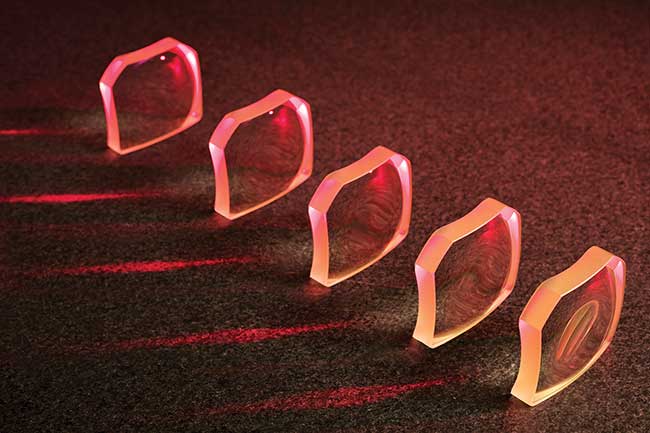Largely unchanged for centuries, optical fabrication is today an evolving and dynamic field with notable advances in molding, surface process optimization and freeform-capable tools.
 In 2018, a six-and-a-half-meter mirror made up of 18 hexagonal segments will quietly unfurl 1.5 million km from Earth, marking the end of years of intense research and refining of optics fabrication techniques. In the silence of space, the James Webb Space Telescope will turn its giant primary mirror toward deep space, kicking off the start of man’s chance to look further back in history than ever before.
Its development, and other high-tech projects like it, has led to many improvements in optics fabrication techniques in use today. From smartphones, wearable optics and head-up displays, to airborne and space-borne remote sensing and surveillance, some of the latest trends in technology have emerged thanks to impressive progress in the way optics are made.
Being the largest mirror ever to be sent to space, one of the challenges of image quality and resolution was met by the team at the Integrated Optical Systems business unit of Coherent Inc. in Richmond, Calif., currently led by Brandon Turk.
The task was to polish each of the 18 hexagonal mirror segments, which are made of ultralightweight beryllium and coated with gold for broadband IR performance. One of the biggest challenges was to ensure the optics are light enough to launch and unfurl, but sturdy enough to withstand the harsh conditions of space.
“Beryllium was chosen because it is extremely light and stiff, with low thermal expansion at the cryogenic temperatures at which the observatory will operate,” Turk said. “However, beryllium is a challenging material to polish, and requires special handling because beryllium dust is a health hazard when inhaled. So we deliver the requisite image quality and resolution by finishing components to very tight figure and wavefront specifications.”
In 2018, a six-and-a-half-meter mirror made up of 18 hexagonal segments will quietly unfurl 1.5 million km from Earth, marking the end of years of intense research and refining of optics fabrication techniques. In the silence of space, the James Webb Space Telescope will turn its giant primary mirror toward deep space, kicking off the start of man’s chance to look further back in history than ever before.
Its development, and other high-tech projects like it, has led to many improvements in optics fabrication techniques in use today. From smartphones, wearable optics and head-up displays, to airborne and space-borne remote sensing and surveillance, some of the latest trends in technology have emerged thanks to impressive progress in the way optics are made.
Being the largest mirror ever to be sent to space, one of the challenges of image quality and resolution was met by the team at the Integrated Optical Systems business unit of Coherent Inc. in Richmond, Calif., currently led by Brandon Turk.
The task was to polish each of the 18 hexagonal mirror segments, which are made of ultralightweight beryllium and coated with gold for broadband IR performance. One of the biggest challenges was to ensure the optics are light enough to launch and unfurl, but sturdy enough to withstand the harsh conditions of space.
“Beryllium was chosen because it is extremely light and stiff, with low thermal expansion at the cryogenic temperatures at which the observatory will operate,” Turk said. “However, beryllium is a challenging material to polish, and requires special handling because beryllium dust is a health hazard when inhaled. So we deliver the requisite image quality and resolution by finishing components to very tight figure and wavefront specifications.”
Member Exclusive: To read the complete article, please Login or Register